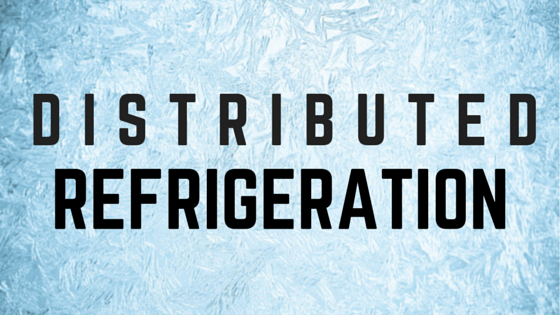The majority of industrial refrigeration systems in the U.S. are central-station ammonia systems—the backbone of the food and beverage industry. For over 100 years, these ammonia systems have dominated the industry because they not only have superior thermos-physical properties, but also because they’re environmentally friendly. Ammonia has a global warming potential (GWP) and ozone depletion potential (ODP) of zero.
In addition, ammonia is:
- One of the most energy-efficient refrigerants available for the temperature range used in the food and beverage industry
- Inexpensive
- Readily available
- Cost effective, with some of the best heat-transfer characteristics of all refrigerants
However, despite its many benefits, ammonia is still a toxic refrigerant and is flammable in certain concentrations. This has led to the development of very specific design and operational regulations so facilities can tap into ammonia’s benefits while operating safely.
Central station ammonia systems’ advantages and disadvantages
Central station ammonia systems are comprised of evaporators (air handling units, cooling coils, etc.) located throughout the facility at the loads to be cooled. The compressors, condensers and vessels of the system are housed in a central machine room and the ammonia is then piped from the machine room to the evaporators at the load.
From an industrial standpoint, this configuration provides significant advantages:
- Central location of all compressors and equipment
- Easy facilitation of backup
- Majority of maintenance kept to one room
The disadvantage of a central station ammonia system is the size of the refrigerant charge. The vessels in the machine room have to be sized to carry the system charge throughout the year, so fairly large surge capacities must be included. The distribution network (pipes) that deliver the refrigerant to the evaporators can be very elaborate, resulting in significant refrigerant charge. And all of the control valve stations located throughout the system have the potential to leak.
While the ammonia refrigeration industry has an excellent safety record, accidents and leaks occur. In response, OSHA developed its Process Safety Management (PSM) program and EPA developed its Risk Management Program (RMP) to regulate use of ammonia and minimize potential leaks in large-scale systems with refrigerant charges over 10,000 lbs. At the same time, Homeland Security now wants to keep track of facilities over 10,000 lbs. Compliance with these regulations and programs has had a significant impact on the cost of operating these systems.
Distributed refrigeration’s advantages and applications
The push to take advantage of the benefits of ammonia while reducing the risks has resulted in an innovative solution: distributed refrigeration with low-charge packaged solutions.
In a central system, the compressors, condensers and vessels are sized for the entire plant and are located in a central machine room. In a distributed system, the compressor, condenser and vessels are sized for one evaporator and are located at the evaporator.
Packaged rooftop systems with compressors and condensers have been used in the air conditioning industry for many years, and now there is a packaged rooftop system for industrial refrigeration. Of course, the biggest advantage is that each system can be designed for a critical refrigerant charge and there is no piping back to the machine room.
A typical 200,000-square-foot cold storage facility with a conventional central station ammonia system could have refrigerant charge from 35,000 to 45,000 lbs, while a distributed system using low-charge ammonia systems would have a total refrigerant charge of less than 3,000 lbs.




